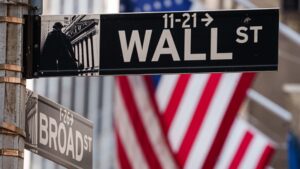The Rise of Active ETFs: A Game-Changer in Investment Strategies
At Extreme Investor Network, we’re dedicated to providing our readers with insights that help navigate the ever-evolving landscape of investing. Today, we’re diving into a pivotal shift in the exchange-traded fund (ETF) market: the surge of actively managed ETFs and what this means for investors looking for innovative ways to grow their wealth.
Understanding the Shift from Passive to Active
Traditionally, ETFs have been synonymous with low-cost, passive management strategies. These vanilla funds have dominated the landscape, capturing the bulk of investment capital. However, recent trends indicate a significant shift towards actively managed ETFs, which are shaking up the investment space. According to recent data from JPMorgan Asset Management, active ETFs accounted for an impressive 27% of net inflows and a staggering 77% of new launches in 2024.
This evolution began with a game-changing 2019 rule change by the U.S. Securities and Exchange Commission (SEC) that opened the floodgates for active management within the ETF structure. As asset managers have learned to navigate this new terrain, many are converting mutual funds into ETFs in a bid to capture new capital and stem outflows.
The Impact of ETF Conversions
Active mutual funds are seeing a transformation; statistics support this claim. Before making the switch, the average actively managed mutual fund experienced about $150 million in outflows. Yet, post-conversion, these funds have attracted an average of $500 million in inflows. Jared Woodard, ETF strategist at Bank of America, highlights this impressive turnaround, showing that the market is responding favorably to actively managed ETFs.
By 2025, an estimated $3 billion worth of mutual fund conversions are on the horizon, further solidifying the trend towards active management. Industry leaders like Johan Grahn, head of ETF market strategy at Allianz Investment Management, have noted the market’s clear preference for actively managed strategies within ETF structures.
What Sets Successful Active ETFs Apart?
It’s crucial to understand that the rise in active ETFs is not merely a replication of traditional stock-picking practices. Many of the most successful products are diversifying their strategies beyond simply trying to outperform the S&P 500. Notable examples include JPMorgan’s Equity Premium Income ETF (JEPI) and the Nasdaq Equity Premium Income ETF (JEPQ), which combine stock-picking with options trading to enhance income generation.
Additionally, buffer funds are capturing attention by leveraging derivatives to offer reduced risk, thereby providing a safety net for investors. Matt Collins, head of ETFs at PGIM Investments, asserts that these innovations in the active space have revolutionized how we perceive active management versus passive strategies.
Diving Deeper: Successful Active ETFs and Market Segments
The ETF landscape is witnessing a variety of successful active strategies. The iShares U.S. Equity Factor Rotation Active ETF (DYNF) has garnered significant attention, amassing over $11 billion in inflows this year, primarily due to its innovative approach to quantitative factor investing. Similarly, funds that provide differentiated access to high-yield fixed income, thematic investments, and "quantamental" strategies are thriving by avoiding competition with an oversaturated passive funds market.
Opportunities Ahead for Active ETFs
Looking ahead, the fixed income sector presents a wealth of opportunities for active ETFs, given that it has lagged compared to equities regarding ETF adoption. As Jon Maier, chief ETF strategist at JPMorgan Asset Management, notes, the bond market remains largely dominated by active management, leaving ample room for active ETF growth. The Janus Henderson AAA CLO ETF (JAAA) serves as a prime example, achieving nearly $11 billion in inflows this year with impressive year-to-date returns.
Moreover, sectors like artificial intelligence are proving fertile ground for active management as they continue to evolve and disrupt traditional frameworks. The AB Disruptors ETF (FWD) is a notable player in this space, outperforming the Nasdaq 100 in 2024 thanks to its strategic focus on innovative companies.
Conclusion: Embracing Change in the Investment World
As the investment world continues to change, active ETFs are emerging as a powerful alternative to passive management strategies. At Extreme Investor Network, we believe that understanding these shifts is crucial for making informed investment decisions. Keep an eye on the evolving landscape of active ETFs; they may just be the key to unlocking new opportunities in your investment strategy.
For more insights and expert analysis, stay tuned to Extreme Investor Network—you won’t want to miss what’s next!

